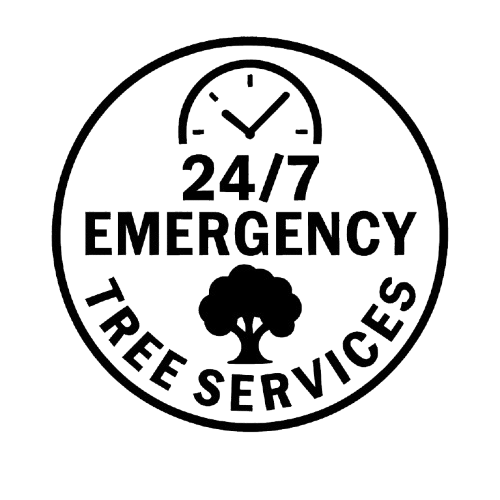Sycamore trees are majestic and often serve as beautiful centerpieces in landscapes, but they can also pose significant risks when affected by storms. With their large limbs and shallow roots, sycamore trees are particularly susceptible to storm damage, making it essential to know how to handle these emergencies. Whether it’s a fallen branch or a tree threatening your property, understanding the process of storm damage assessment and hazardous tree removal is critical. Moving swiftly and enlisting the help of professionals can safeguard your safety and prevent additional damage to your house.
Key Takeaways:
- Safety First: Always prioritize safety by avoiding storm-damaged sycamore trees, especially near power lines or structures. Professional tree services should handle the removal to prevent accidents.
- Timely Action is Crucial: Sycamore trees injured by storms require prompt repair to prevent further damage to your property. Acting quickly ensures the tree doesn’t become a more significant hazard.
- Professional Arborists are Essential: Hazardous tree removal is complex and dangerous. Professional arborists have the equipment to assess and remove storm-damaged trees safely, ensuring the safety of your property and family.
Understanding Sycamore Trees
Characteristics of Sycamore Trees
Sycamore trees (Platanus occidentalis) are known for their impressive size and broad canopies. They are a striking presence in any landscape with a canopy that may stretch up to 70 feet in width and up to 100 feet in height. Another distinctive feature is their bark, which peels off in patches to reveal a mottled, white, and gray trunk. While sycamores add beauty and shade, their size and fast growth can lead to several common issues, such as weak wood, heavy limbs, and disease susceptibility.
Why Sycamores Are Prone to Storm Damage
- Large limbs: Sycamore tree’s thick, expansive branches can become heavy, especially when weighed down by rain or snow. During strong winds or storms, these limbs are prone to breaking.
- Shallow root systems: Sycamore trees often develop shallow root systems despite their height. These roots may not provide enough stability during storms, causing the tree to lean or uproot under high winds.
- Fast growth: While fast-growing trees like sycamores are desirable for providing quick shade, this rapid growth often results in weaker wood. Damage is more likely to occur during a storm when weak branches break more frequently.
Common Types of Damage Sycamore Trees Sustain During Storms
- Broken limbs: Heavy branches can snap under the pressure of strong winds or ice accumulation, posing an immediate danger to nearby structures or vehicles.
- Cracked or split trunks: High winds can cause significant stress on the trunk, leading to cracks or splits and compromising the tree’s stability.
- Uprooting: Sycamores are more likely to be uprooted due to shallow roots, especially in saturated soils after heavy rains. Uprooted trees can fall on homes, roads, or power lines, creating hazardous conditions.
- Fallen debris: Smaller branches and twigs often litter the ground after a storm, adding to the cleanup effort and indicating potentially more significant issues with the tree’s health.
Assessing Tree Damage After a Storm
Signs of Storm Damage in Sycamore Trees
After a storm, it’s essential to carefully assess any damage to sycamore trees to prevent further risks. Here are the key signs to look for:
- Cracked limbs: Look for branches that are split or hanging, as they pose an immediate risk of falling. Due to the size and weight of the branches, cracked limbs are hazardous in giant sycamores.
- Leaning trees: If a sycamore has shifted or begun leaning after a storm, it indicates that its root system may be compromised. Even slight leaning can lead to tree collapse, particularly during future storms.
- Exposed roots: A common issue with sycamore trees due to their shallow root systems, exposed or uplifted roots indicate that the tree’s foundation is weak. If roots are visible above the ground or dislodged, the tree is at a greater risk of falling.
How to Determine if a Tree is a Hazard
To assess whether your sycamore tree poses a significant risk after a storm, consider the following factors:
- Proximity to buildings: If the damaged tree is close to your home, garage, or any other structure, it’s a potential hazard. Falling branches or a collapsed tree can cause severe property damage.
- Proximity to power lines: Sycamore trees near power lines are hazardous. If any branches are leaning against or close to electrical lines, the situation requires immediate professional intervention due to the risk of electrocution or fire.
- Proximity to roads or pathways: A tree leaning toward a road or walkway can be hazardous to passing vehicles and pedestrians. Any tree that obstructs movement or threatens safety needs urgent attention.
When to Call an Emergency Tree Service Versus Handling Minor Issues Yourself
- Call an emergency tree service if you notice large, cracked limbs, a leaning tree, exposed roots, or proximity to power lines. Any situation involving major damage or significant hazards requires professional intervention to remove the tree safely.
- Handle minor issues when dealing with small branches or fallen twigs. You can safely remove light debris and trim small, accessible branches, provided they do not pose an immediate danger. However, avoid attempting to remove larger branches or cut down trees without proper equipment and expertise.
Steps to Take Immediately After a Storm
Safety Precautions
- Stay away from fallen limbs: Fallen or hanging branches can still be dangerous and may continue to break or fall. Wait for an expert to evaluate the damage before approaching any damaged trees.
- Check for downed power lines: If any part of the tree touches or is near power lines, stay clear and contact your utility company immediately. Do not attempt to approach or handle the situation yourself.
Documentation
- Photographing the damage for insurance purposes: Before any cleanup or removal, take clear, detailed photographs of the tree damage. Documenting the scene helps support any insurance claims you may need to file for storm-related property damage. Capture close-up shots of broken limbs, exposed roots, and damage to nearby structures.
Temporary Solutions
- Bracing branches: For limbs that are not severely damaged but at risk of falling, you can use temporary supports like ropes or bungee cords to brace until a professional can address the issue.
- Removing debris safely: For smaller branches and debris scattered across your yard, you can clear the area using protective gear like gloves and safety goggles. However, avoid removing larger, heavier branches without professional assistance to prevent injury or property damage.
Emergency Tree Removal Process
When and Why Emergency Tree Removal is Necessary
Emergency tree removal becomes necessary when a storm-damaged sycamore tree poses an immediate threat to people, property, or public safety. Situations that demand urgent attention include:
- Fallen trees or large branches that block access to your home’s roads, driveways, or entrances.
- Trees leaning precariously toward your house, power lines, or other structures, significantly if a storm has destabilized them.
- It has cracked or broken limbs that hang dangerously, threatening to fall at any moment.
- Uprooted trees with exposed roots or compromised stability can easily fall with minimal warning.
In these scenarios, quick action is needed to prevent further property damage, personal injury, or hazards like power outages caused by downed lines.
The Role of Professional Arborists: Assessing, Planning, and Executing Removal
- Assessing the situation: Arborists carefully evaluate the extent of the tree damage and determine whether it poses an immediate hazard. They also consider the tree’s health and stability to decide whether removal, pruning, or trimming would suffice.
- Planning the removal: Tree removal, especially in emergencies, requires a well-thought-out plan. Arborists determine the safest and most efficient approach to removing the tree without causing further damage to your property or risking injury to workers or bystanders. They consider the tree’s proximity to structures, power lines, and other obstacles.
- Executing the removal: Once the plan is in place, the arborist and their team use specialized equipment to carefully dismantle and remove the tree, branch by branch, if necessary. This method ensures controlled removal, especially in areas with tight space or additional risks, such as near homes or electrical lines.
Specialized Equipment Used in Hazardous Tree Removal
Removing large, storm-damaged sycamore trees often requires the use of advanced equipment to ensure the process is safe and efficient:
- Cranes: When trees are large or located in tight spaces, cranes are used to lift and remove sections of the tree safely without causing further damage to nearby structures or property.
- Chainsaws: Arborists use heavy-duty chainsaws to cut through thick branches and trunks. Specialized chainsaws are necessary to handle the dense wood of sycamore trees.
- Wood chippers: After removing the branches and trunk sections, they are broken down into smaller, manageable pieces for disposal.
- Ropes and rigging systems: These control the descent of large branches or tree sections, preventing them from falling uncontrollably and causing damage.
Importance of Permits and Legal Considerations in Tree Removal
Before proceeding with any tree removal, especially in emergencies, it is essential to understand the legal requirements involved:
- Permits: In many regions, removing large trees—especially those classified as protected species or in urban areas—requires local authorities’ permits. Homeowners may face fines if trees are removed without the necessary documentation.
- Homeowners association (HOA) regulations: If you are in a community with an HOA, you may also need approval before removing trees, even in an emergency.
- Utility lines: If the tree is entangled with power lines, removal must be coordinated with the local utility company to avoid electrical hazards. Arborists may need special clearance to work near these lines.
Cost of Sycamore Tree Emergency Services
Factors Affecting the Cost
- Tree size: Removing an enormous tree securely will require more workforce, tools, and time. Sycamore trees are far more expensive to remove than lesser trees because they can reach over 100 feet.
- Location: Trees near buildings, power lines, or other obstacles may require more careful and time-consuming removal. If cranes or other specialized equipment are needed, costs will rise.
- Type of damage: The extent of the storm damage also influences pricing. A heavily damaged tree, with large broken limbs or an uprooted base, will require more resources to remove safely. Additionally, emergency services may charge a premium for urgent work outside of regular business hours if the tree is at immediate risk of falling.
- Debris removal: If the service includes clearing and hauling away the debris after removal, this can also add to the total cost.
Average Price Range for Sycamore Tree Removal and Emergency Services
|
Service Type |
Average Price Range |
|
Standard sycamore tree removal (non-emergency) |
$500 – $2,500 |
|
Emergency tree removal (urgent service) |
$1,000 – $4,000+ |
|
Tree removal with a crane |
$2,500 – $7,000 |
|
Limb removal (per limb) |
$200 – $600 per limb |
|
Debris hauling and cleanup |
$100 – $500+ |
Insurance Considerations: What is Covered and How to File a Claim
- What is covered: Should a tree damage a house, garage, fence, or other insured structure, most insurance policies will pay for its removal. Insurance may also pay for removing a tree if it obstructs your driveway or provides access to your house.
- What is not covered: Insurance typically won’t cover tree removal if the tree falls in your yard without damaging a structure or creating a hazard. In these cases, you’ll need to cover the removal cost yourself.
- Filing a claim:
- Document the damage: Take close-up photos of the tree and any damage it may have caused your possessions. This will support your assertion.
- Contact your insurance provider: Contact your homeowners’ insurance company to report the storm damage and request information on how to proceed.
- Get estimates: Most insurance companies require you to submit estimates from professional tree removal services before approving the claim. Get at least two to three quotes.
- Submit your claim: Once you have the documentation and estimates, file your claim with your insurer.
- Deductibles and limits: Your insurance policy may have a deductible for tree removal, meaning you’ll need to cover a portion of the cost. Additionally, some policies limit how much they will pay for tree removal, so review your coverage carefully.
Preventing Future Sycamore Tree Hazards
Regular Maintenance Tips: Pruning, Monitoring for Disease, and Root Management
- Pruning: Regularly pruning sycamore trees can help keep them healthy and minimize the risk of storm damage. Removing dead or weak branches prevents them from breaking during heavy winds. Additionally, thinning the canopy reduces wind resistance, lowering the chances of the tree being uprooted during a storm. Pruning should be done annually or biannually, especially before storm season.
- Monitoring for disease: Sycamore trees are prone to certain diseases, such as anthracnose, which weaken their structure and increase the likelihood of damage during storms. Check your tree often for disease symptoms such as cankers in the bark, withering leaves, or scars on the leaves. If any signs of disease are present, early intervention through treatments like fungicides can prevent further weakening.
- Root management: Sycamores have shallow root systems, which can make them unstable. Prevent root damage by avoiding heavy landscaping or construction near the tree’s base. Maintain healthy soil and ensure the tree receives proper watering, especially during dry spells. Aeration around the root zone can also help promote more profound root growth and better stability.
How to Strengthen Sycamore Trees Against Future Storms: Tree Bracing and Cabling
For particularly large or vulnerable sycamore trees, additional support methods can help reduce storm-related risks:
- Tree bracing: This method involves installing rods or bolts within the tree to reinforce its structure. Bracing is typically used in trees with split trunks or large limbs at risk of breaking during high winds. By bolting critical sections of the tree together, bracing provides additional strength and stability.
- Cabling: Cabling is a technique for installing flexible steel cables between branches to limit excessive movement during storms. This helps protect the tree from breaking under stress by distributing weight evenly across the structure. Cabling is especially useful for giant sycamores with multiple heavy limbs. It’s a preventive measure that can extend the tree’s life and reduce the likelihood of significant damage.
Benefits of Hiring a Professional Arborist for Routine Inspections
While homeowners can take many preventive steps on their own, hiring a professional arborist for routine inspections provides additional benefits:
- Expert evaluation: Arborists are trained to identify early signs of damage or disease that might go unnoticed. Regular inspections can catch issues like root rot, weak branches, or pest infestations before they lead to more severe problems.
- Custom maintenance plans: A professional arborist can develop a tailored maintenance plan specific to your sycamore tree’s needs, ensuring it remains healthy and strong year-round. This might include recommendations for pruning schedules, soil care, or disease treatment options.
- Emergency preparedness: Arborists can assess whether your tree is at high risk for storm damage and recommend preemptive measures like bracing or cabling to protect it. Addressing potential hazards before a storm hits reduces the need for emergency tree removal services.
- Safety and compliance: Arborists know local regulations and can ensure that any work done on your tree complies with necessary permits and guidelines. This is particularly important if the tree is near power lines or public property.
FAQs
What should I do if a sycamore tree limb falls on my house?
Call a reputable tree removal company to inspect and remove the branch. Then, promptly leave the area and notify emergency personnel.
How do I know if my sycamore tree is at risk of falling?
Look for signs such as leaning, cracked trunks or limbs, exposed roots, or large branches hanging loosely after a storm.
Does homeowners insurance cover sycamore tree removal?
In most cases, storm damage removal is covered by insurance, especially if the tree poses a hazard to your home or property. Always check your policy.
Can I remove a storm-damaged sycamore tree myself?
It’s only recommended if the tree is small and the damage is minor. Hazardous tree removal requires special equipment and expertise to ensure safety.
How long does it take for emergency tree removal after a storm?
It may vary depending on the level of damage and the available services, but emergency removal is usually given priority and can be completed in a day or two.
Conclusion
While beautiful and majestic, Sycamore trees can pose significant risks during storms if not correctly maintained. It is critical to know how to evaluate storm damage, when to contact emergency services, and how much it will cost to protect your belongings and loved ones. Taking proactive steps, such as regular pruning, monitoring for disease, and reinforcing the tree with bracing or cabling, can strengthen your sycamore tree against future storms. By enlisting the expertise of professional arborists for routine inspections, you ensure that your tree remains healthy and less prone to hazardous damage. In the end, prevention is the key to avoiding costly emergencies and maintaining a safe, beautiful landscape.




